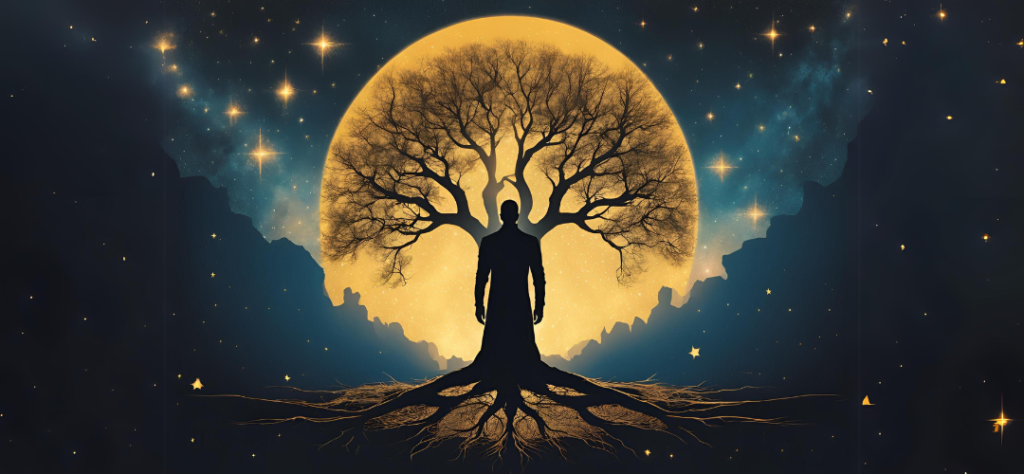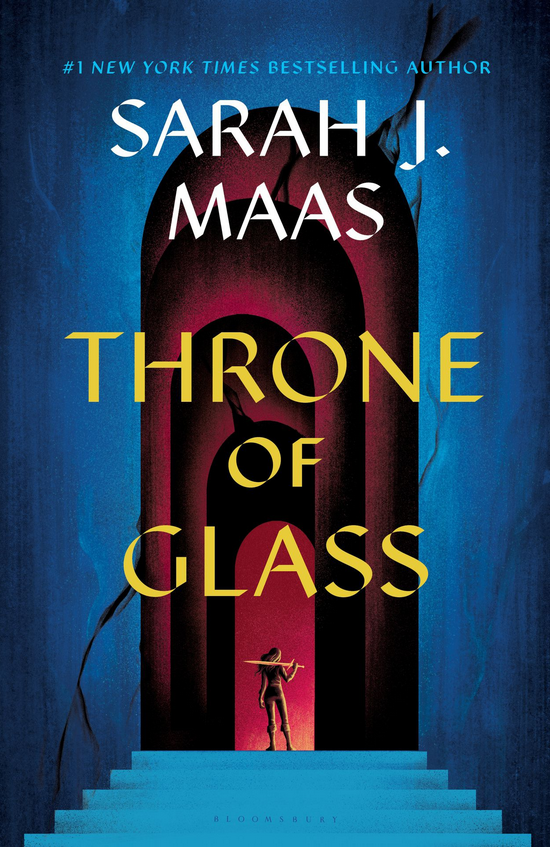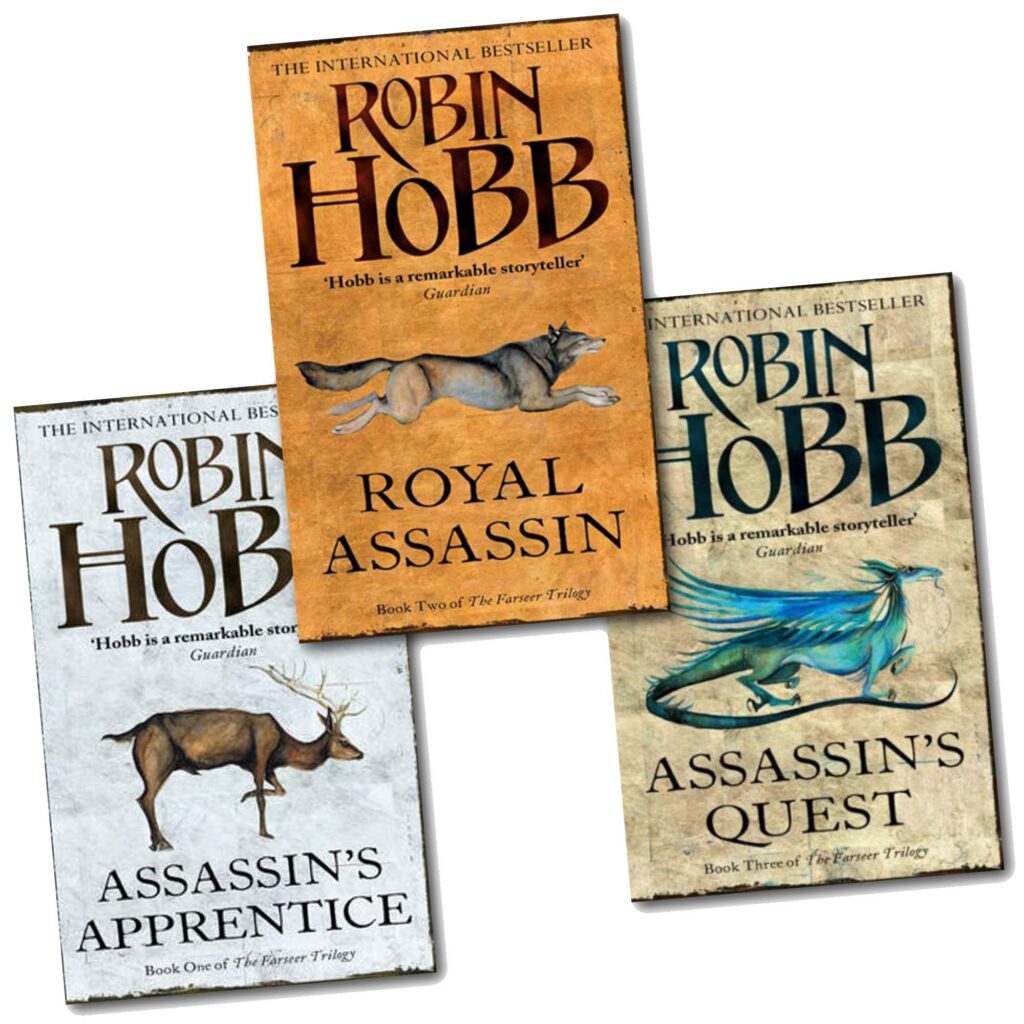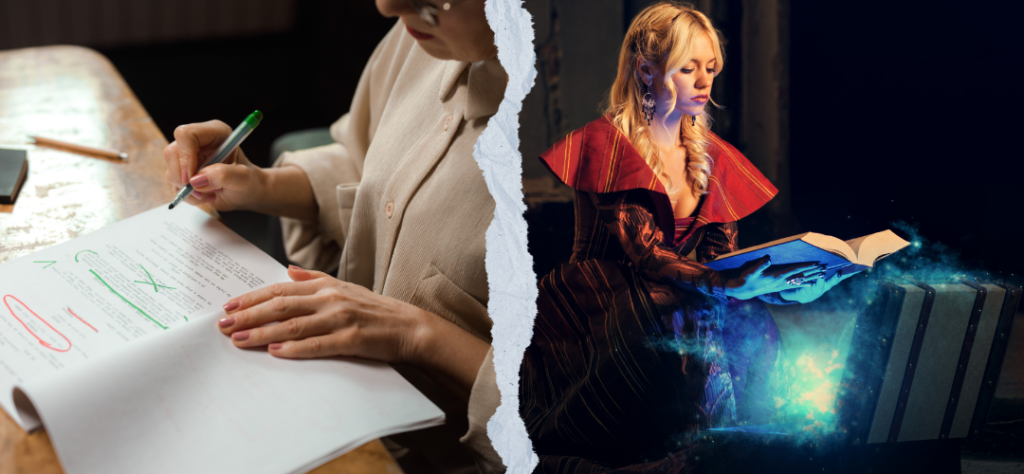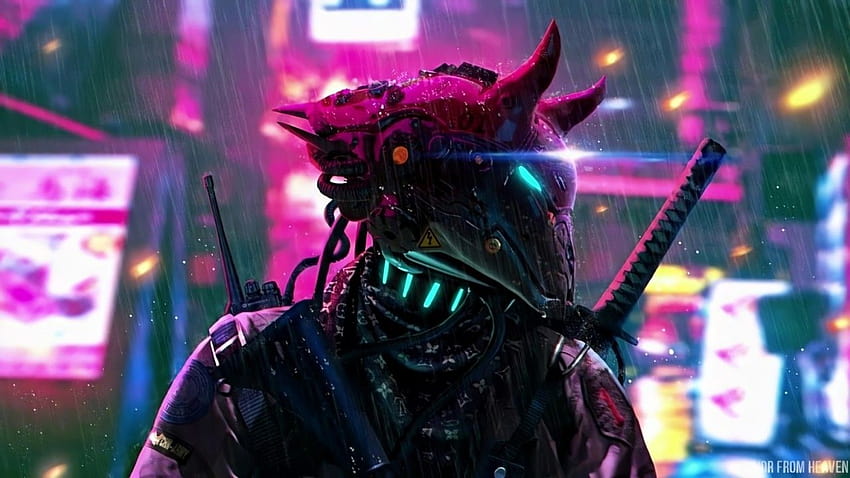Greatness Within: How Identity and Roots Shape Fantasy's Saviors
“I was a child raised by stories, my identity built on myths, and from those stories, I learned that we all carry the weight of the past.” ~Kvothe, The Name of the Wind by Patrick Rothfuss
“I’ve no homeland, no flag, no throne to defend. But the world has chosen me to stand between chaos and order. That is my burden.” ~Geralt of Rivia, The Witcher by Andrzej Sapkowski
“I am a queen, not because of bloodlines or crowns, but because I fight for those who can’t. That is where my true lineage lies.” ~ Aelin Galathynius, Throne of Glass by Sarah J. Maas
The roots and identity of a character significantly shape responsibility in fantasy worlds, as they influence how that individual perceives their place within their communities, cultures, and broader world. These concepts deeply affect motivations, values, and the way individuals and groups interact with each other, often determining how responsibility is shared and acted upon in the face of challenges.
Here are eight ways how the character’s roots and identity affect collective responsibility:
- Roots and identity can provide a particular community, culture, or group with a strong sense of belonging. This connection creates a deep emotional and psychological bond, fostering a sense of duty and responsibility to protect, preserve, and contribute to the well-being of the group. Characters who feel strongly rooted in their identity are more likely to take on collective responsibilities because they see themselves as integral parts of the community’s survival and success. Aelin Galathynius (Throne of Glass by Sarah J. Maas) carries the identity of the lost Queen of Terrasen. Even when she tries to run from her past, her sense of duty and identity as a queen destined to reclaim her kingdom pulls her back. Her roots in Terrasen and her legacy drive her actions. Aelin embraces her role as the leader of a resistance against a powerful empire. She carries the burden of her people’s hopes and fights not just for herself but for the survival of her kingdom and the freedom of others oppressed by the empire. Her deep connection to her heritage and her people fuels her willingness to make sacrifices for the greater good. Other characters with similar roots and identity would be Aragorn (The Lord of the Rings by J.R.R. Tolkien) or Jon Snow (A Song of Ice and Fire by George R.R. Martin)
- Cultural Values and Traditions tie roots and identity to a character to dictate how responsibility is understood and shared. In fantasy worlds, different cultures may have unique approaches to collective responsibility based on their beliefs, rituals, and historical experiences. These cultural frameworks shape how individuals and groups perceive their roles and what they owe to their society. A good example character would be Nynaeve al’Meara from The Wheel of Time by Robert Jordan, who comes from the village of Emond’s Field, a small, close-knit community in the Two Rivers. Her upbringing in this traditional environment shapes her identity, especially as a Wisdom, a role entrusted with the health and well-being of her people. Two Rivers’ values emphasize duty to the community, a strong work ethic, and protecting others, all of which dictate Nynaeve’s strong sense of responsibility. Her sense of duty towards her village and friends often guides her actions throughout the series. Her cultural background instills in her the belief that it is her responsibility to protect, heal, and guide others, even at great personal cost. Additional characters would be Tehanu (Tenar) from The Earthsea Cycle by Ursula K. Le Guin or Bastian Balthazar Bux from The Neverending Story by Michael Ende ~ “Every real story is a never-ending story.”
- Identity Conflicts and Divided Loyalties Characters who have complex or conflicting identities can experience tension when it comes to fulfilling collective responsibilities. For example, a character with roots in two different cultures or groups might struggle to reconcile their responsibilities to both. This internal conflict can create divided loyalties, complicating their ability to contribute to the collective good of either group. Frodo Baggins, from The Lord of the Rings by J.R.R. Tolkien, is a hobbit, a race known for their peaceful, simple lives in the Shire. However, he is thrust into a world of war, darkness, and power when he becomes the Ring-bearer. His identity as a hobbit contrasts with the immense responsibility of carrying the One Ring and the burden it places on him. He struggles with the conflicting desires of returning to the Shire and fulfilling his duty to destroy the Ring. The Ring’s corrupting influence further complicates his identity, pulling him toward darkness even as he tries to remain true to his mission. His journey is marked by the tension between his personal identity and the immense collective responsibility he carries.
- Preservation of Roots and Heritage Characters feel a strong connection to their roots and often take on the responsibility of preserving their heritage, whether that means protecting sacred sites, maintaining cultural practices, or passing down knowledge to future generations. This responsibility is not only about the present but also about ensuring the survival and continuity of their identity over time. This example is a favorite character. Lessa, from Dragonriders of Pern by Anne McCaffrey, is the last of the Ruathan bloodline, a noble family from the planet Pern. Her heritage is tied to both her noble lineage and the ancient traditions of the Dragonriders, who protect Pern from the deadly Threadfall. Lessa is determined to preserve these traditions and the Weyr’s ancient ways. As a Weyrwoman, Lessa takes on the responsibility of protecting and revitalizing the dragon riders’ way of life, which is essential to Pern’s survival. She works tirelessly to ensure that the dragons, their riders, and their sacred traditions endure through future generations, even in the face of skepticism and a waning belief in the old ways. Her efforts to preserve Pern’s heritage are central to the survival of the entire planet.
- Not all characters feel fully rooted or accepted within their communities, and this can affect their sense of collective responsibility through exclusion and identity struggles. Characters who feel like outsiders or are marginalized because of their identity may either distance themselves from collective responsibilities or fight to prove their worth and secure a place within the group. This dynamic creates tension around who is considered responsible and who gets to share in the benefits of collective effort. A well-known character, Elphaba from Wicked: The Life and Times of the Wicked Witch of the West by Gregory Maguire, is also known as the Wicked Witch of the West, is an outcast due to her green skin and unconventional personality. From her childhood in Munchkinland to her time at Shiz University, she struggles with societal rejection and prejudice, never fully finding acceptance within the communities around her. Elphaba’s outsider status deeply influences her sense of collective responsibility. She feels alienated from the mainstream society of Oz, which leads her to question its moral and political structures. Her actions, often misunderstood as villainous, are driven by a desire to challenge the corrupt system of Oz rather than serve it, highlighting the conflict between her sense of duty and her rejection by society. Additional characters might be FitzChivalry Farseer from The Farseer Trilogy by Robin Hobb or Jon Snow from A Song of Ice and Fire by George R.R. Martin.In my upcoming novel Trena, the Memory Reader, my protagonist Trena is struggling with her identity and wishes to escape her low-caste roots, which has lowered her self-worth for her identity in her community. The variety of impressions of her village people regarding her is as skewed as her own. See how she feels her purpose as she is called forth to hear a vision quest.
“Trena, daughter of Edis, stand for a hearing!” a middle-aged shamt called out from the canopy-shaded dais, centralized where the residents gather for the monthly announcements. His tone, though, held no more of an answer to his request than if he held the roster of the latest chosen younglings to begin their age quest testing or if he were about to confer the planting seasons weathering report.
All eyes shifted to look at her. These days she could no more hide within the tribe than a dragon could hide amongst the horses in the pens. Her long dark hair hung, stray little wisps flowing in the crisp morning air; to frame the one-piece shaded visor she now wore across her eyes, a brooding contrast to the tanned features beneath. Yet, the strange eye covering was not the only noticeable evidence. In truth, she could never hide. A clansman of the Ipeyo people, be she a woman, man, or child, is one of us and we recognize our own. But many people did perceive her differently.
Unlike the boisterous young women raised in the isolated village, there was a stillness within her seventeen years. A lasting calm that bound the regular girlish energy with silent apathy. And when she spoke, her tone held a carefulness. And like the mountain she lived upon was built to withstand the winds and cold, she too was taller than average, strong of muscle, some say strong of mind. Although she held these traits, she was bred from the cautious shepherd folk, a reserved and lower sub-caste of the tribe.
Some noted the youthful woman, who carried her parents’ burden of low caste, living on the mountaintop as silent walkers among the slopes, herding the sheep and goats, alone on the upper reaches. An easy task meant for those with simple minds, she was ignored and regarded as weak and destitute. The familial generations of her line were oft spurned as such and moved to outlying clusters further away from the village proper. Still, several rumored their ilk were kin to the mountain itself as if they were to shift from human to not. Or they were but seeds of the stargazers, those who read the gods and goddesses’ footprints among the dark blanket of night. If they followed ancient star paths to weigh and measure life, perhaps they held deeper thoughts. But most of her kind were withdrawn and taciturn, empty of any god’s faith.
Some only saw the shadow visor across her face. A shamt’s intervention with Cavels special skills, held her mysterious and frightening gift behind its shield. She was to be feared. Whether reticent, low caste, careful, or strange, the new ability within her to draw short visions of other’s memories into her own thoughts was unique and unknown and a powerful gift, assured of a god’s touch. She was a spark, taken wing from among the grounded flames, carried to the highest draft.
Yes, she was known. Perhaps her being close to where the peoples’ beloved god, Cavel, the Father of Sky Horses, roamed—his cumulus towering clouds with roiling layers, serving as imagined roadways for his band of horses running so closely above—brought this one to his attention? Like the drifting dandelion seeds, with a gust of air, was she separated from all by whimsy? Was she plucked from the dust of his many tribes, to find and give her this gift? Such thoughts were not hers alone. The villagers questioned in whispers even as Trena felt embarrassed and doubted herself.
Although one could not view her squinting gaze through the dark tint, surrounded by her entire village, she adopted a loose stance of confidence—one rabbit-skin-covered foot slightly forward, her toned arms held in front of her body, one hand clasping the other wrist—as the sun fell on her raised head. It was vaguely similar to the stance she would eventually cultivate as an adult, but in her youth, she looked taut with guardedness. And, that is why, like ice water from the frozen ponds, poured from the bucket onto her head, she was vigilant upon hearing her name called. She shivered at the demand. The formative shamt regarded her, and with a bold resonance, he spoke. “I have been on a vision quest.”
- In the shaping of worldviews and their place in it, a character’s roots and identity influence what they see as their responsibilities. Characters who grow up with strong ties to their cultural roots might have a deep understanding of their community’s needs and challenges, which informs their actions. Their worldview, shaped by their identity, affects how they perceive collective responsibility, whether it’s toward their immediate community or the larger world. A great character example would be Alia Atreides from Dune by Frank Herbert, the younger sister of Paul Atreides, who has a profound understanding of the Fremen culture and the challenges faced by the desert people of Arrakis. Born with the ancestral memories of the Bene Gesserit, Alia is deeply aware of the Fremen’s struggles for survival in a harsh environment and their desire for freedom from external control. Alia’s actions are shaped by her knowledge of Fremen traditions, their need for water, and their fight against imperial oppression. Her leadership, though complicated by her unique abilities, is informed by her understanding of the Fremen’s cultural and environmental challenges, as she seeks to navigate the political and ecological complexities of Arrakis while honoring the needs of her people. Additional characters would be Bran Stark from A Song of Ice and Fire by George R.R. Martin and Samwise Gamgee from The Lord of the Rings by J.R.R. Tolkien
- Reclaiming Identity In some fantasy narratives, characters embark on journeys to reclaim lost or forgotten aspects of their identity. This process of rediscovery often brings with it a renewed sense of responsibility to the group or culture they reconnect with. As they uncover their roots, characters might take on new roles in preserving or rebuilding their community, recognizing the importance of collective responsibility in maintaining their newly rediscovered identity. The best example character is Kvothe, from The Kingkiller Chronicle by Patrick Rothfuss, who journeys to piece together the fragments of his past, especially after the trauma of losing his family and wandering as an orphan. His quest to understand his heritage, including his connections to the mysterious Chandrian and the legendary Lethani culture, is central to his story. He is about reclaiming the identity of who he was before tragedy struck and merging with who he becomes as a skilled musician, arcanist, and swordsman. He seeks to uncover the truth about his past and to reclaim the parts of his identity that were lost when his family was killed. Additional characters Rand al’Thor from The Wheel of Time by Robert Jordan or Ged (Sparrowhawk) from A Wizard of Earthsea by Ursula K. Le Guin
- Strong roots and a clear sense of identity can serve as powerful motivators in fulfilling collective responsibilities. Characters who are secure in their identity often draw strength from their heritage, using it as a foundation for leadership and resilience in the face of adversity. Their sense of identity can inspire others, rallying groups around shared values and goals, and reinforcing the collective effort to achieve common aims. Ciri (Cirilla Fiona Elen Riannon) from The Witcher series by Andrzej Sapkowski, is a princess of Cintra and the prophesied child of Elder Blood, a lineage that grants her extraordinary abilities. Her royal heritage and her connection to the powerful line of elves give her strength, even as she faces numerous threats and challenges throughout her life. Ciri’s awareness of her heritage provides her with a sense of purpose and the inner strength needed to survive traumatic experiences and intense battles. As she grows into her powers, she learns to harness her Elder Blood and royal lineage, using them as a foundation to confront her enemies and shape her destiny. Additional characters might be Aragorn from The Lord of the Rings by J.R.R. Tolkien or Daenerys Targaryen from A Song of Ice and Fire by George R.R. Martin.
These eight different ways of influencing collective responsibilities, hinge on the roots and identity of the characters in a fantasy world by shaping how they view themselves, their roles within their communities, and their obligations to others. Whether it’s through a deep sense of belonging, cultural traditions, internal conflicts, or the preservation of heritage, roots, and identity affect how responsibility is distributed, accepted, and acted upon. These concepts add depth and complexity to fantasy narratives, highlighting the interplay between individual identity and the broader collective good.
Be on the lookout for Trena, the Memory Reader to release in December 2024.
Please read and review my serial publishing novel, Sparrow’s Legacy, on Kindle Vella. You can read the first three chapters free on Amazon by searching for “Sparrows Legacy Kindle Vella” or clicking here. My debut SFF novel, the space opera Drayton’s Discoveries is available on Amazon. For the love of all fantasy and SFF, if you read something please leave a review. Feedback is my sole sustenance for writing. Don’t let me starve.
For those trying the writing game, I want to give a quick shout-out to PLOTTR software. I’ve found it has really improved my writing game and increased my efficiency tremendously. It is my new favorite writing aid. Use any of my affiliate links below and I might get a small commission. Thanks.
Check out my YouTube channel for PLOTTR videos @jlnichauthorsff
Joseph Michael’s Learn Scrivener Fast e-course
Please subscribe to my website if you want to be notified when I’ll be publishing or to get free samples of my work.
JL Nich, Science Fiction Fantasy Author

